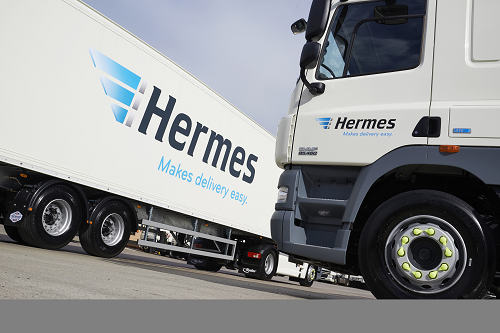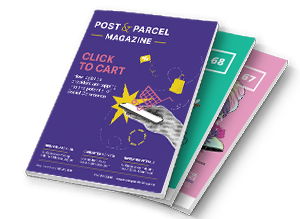
Four out of five shoppers satisfied with their parcel delivery service

More than four out of five consumers in the UK and Germany are satisfied with the level of service they receive from companies delivering their online purchases, according to the latest annual International Shopping Survey commissioned by Hermes. The Hermes survey – which was compiled using responses from more than 2,000 consumers in the UK and 1,000 in Germany – found that 24% of UK shoppers were “very satisfied” and 59% “quite satisfied” with delivery service levels, while in Germany the statistics were, respectively, 21% and 63%.
Whilst the 2015 Survey showed that online usage is at saturation point, the real growth in the market has come from the numbers now shopping online at least three times or more, in the last 3 months. In the UK the number of regular online shoppers has grown from 26% (13.5 million shoppers) to 36% (18.7 million shoppers) – an increase of 39%. In Germany the respective figures are 11% (7.8 million online shoppers) in 2013, to 20% (14.1 million shoppers) in 2015 – an increase of 82%.
The considerable growth in online retail shopping is also increasing due to the number of purchases an individual is making each quarter. Heavy online purchasers (i.e. those making 11 or more purchases per quarter) has risen considerably in the last two years from 11% in 2013 to 16% in 2015 (UK) and from 9% in 2013 to 13% in 2015 (Germany). The study indicated that the market is therefore increasing in two ways: with the number of people now shopping regularly online; and the increase in the number of items each shopper is purchasing.
Delivery services improving
The Hermes study also found that three quarters of respondents believe delivery services are improving, stating an increase in new services, timescales and communication as reasons for this. Home delivery still remains by far the most popular option for those ordering online with over 70% in both countries preferring this method and also stating that it was more convenient for them than Click & Collect (which is in line with the findings of Triangle Management Services’ UK Domestic B2C Express Parcels Distribution Survey).
Delivery innovations
The Hermes survey also asked how appealing some of the latest delivery innovations are. The most popular (39% for both UK and Germany) was the idea of a retailer or delivery company providing a fitted, secure box outside the home for small or medium sized parcels, accessed by a secure pin number. The use of environmentally friendly electric vehicles also scored well (36% in the UK, 45% in Germany) as did the idea of deliveries being made to the person rather than the address (30% in the UK, 26% in Germany) and the notion of paying an annual delivery subscription fee to a courier (27% in the UK, 40% in Germany).
Innovations that proved less appealing included the use of a social delivery service such as Nimber (10% in the UK, 18% in Germany), the idea of paying the courier directly for delivery (11% in the UK, 8% in Germany), and delivery to the boot of a consumer’s car using a special code to enable access (8% in the UK, 7% in Germany).
Types of online shopper
The 2015 Hermes International Shopping Survey has revealed that in both the UK and Germany the market segments into specific online shopper types, providing retailers with further insight into consumer behaviour and preference:
eShoppers – the 53% that mainly look and buy online. There tends to be a male bias to this group who are in senior management roles and are IT proficient. They buy a wide range of products, are heavy eBay users, and are likely to be attracted to retailers’ websites that are both mobile optimised and easy to use.
Social Shoppers – the 7% that research online and buy from the high street. There tends to be a female bias to this group which is younger. They are regular users of Click & Collect and anticipate that they will shop online more in the future. They are high social media users, which they use to explore new products ranges and also to complain.
Savvy Shoppers – the 6% that look in high street and buy online. These tend to be students or junior managers who are astute online shoppers using different techniques to get discount vouchers and offers.
The Traditional Shoppers – the 4% that mainly look and buy on the high street. These tend to be the over 50s who are less IT proficient. They believe that improved navigation on retail sites would help their online shopping experience.
The Pragmatic Shoppers – the 30% that use a mix of both online and the high street. This group typically reflect the average frequent shopper profile both demographically and behaviourally. They are not overly adventurous and anticipate similar level of online shopping in next 12 months.
The findings of the survey show that whilst most people still use their PCs or laptops to do their online retail shopping there is a continuing growth in the use of mobile devices (smartphones and tablets). Currently 55% of UK shoppers and 42% of German shoppers use a mobile device to make some of their retail purchases.
Greater expectations
Along with the increase in online shopping, the survey found that there has been a rise in customers’ demands and expectations –especially with regard to delivery.
Areas where the consumers felt there was room for improvement included: making sure any additional charges such as taxes or delivery costs are clearly stated upfront rather than further along the order process; better photos and descriptions to reduce the need to return items; and more online shopping loyalty schemes. Other suggestions included quicker delivery speeds, more stock and less intrusive online marketing.
Commenting on the research findings, Carole Woodhead, CEO at Hermes UK, said: “This is the fifth year of the Hermes International Shopping Survey which has once again delivered some fascinating findings. The research reveals that there are now more than 18.7m people that regularly shop online within the UK alone, whilst more than a third of consumers will shop online even more during 2016. This goes to show that the retail industry is certainly doing something right. Moving forward, there is no doubt that the fast growth of online shopping continues to provide real opportunities and challenges for the industry and a good understanding of consumer behaviour and expectations is essential.
“I am delighted to see the high satisfaction scores around customer service, an area that we at Hermes have invested considerable resources in, and that once again delivery services are improving.
“We are now working, and indeed living, in a fast-paced and constantly evolving multi-channel world and it is clear to me that the industry as a whole is coping well with the growing volumes and expectations. However, we cannot afford to become complacent. With growing online volumes the industry must continue to invest in capacity, people, innovation and technology to ensure end consumers receive exceptional levels of service. At Hermes, we have made this a top priority and we are confident that our retail clients will enjoy their most successful peak season to date.”
Hermes launched 2015 survey at an event in London’s Science Museum yesterday (8 October) – and it also used the occasion to announce some of the new initiatives that it is working on in the UK. These included the roll-out of its new In-store Kiosks for parcel deliveries and returns, and trialling Pelipod parcel boxes (an interesting development, given that this sort of delivery innovation was rated highly by the survey respondents).
An eBook that contains the key highlights of the survey is available to download at www.deliveringthefuture.co.uk.















